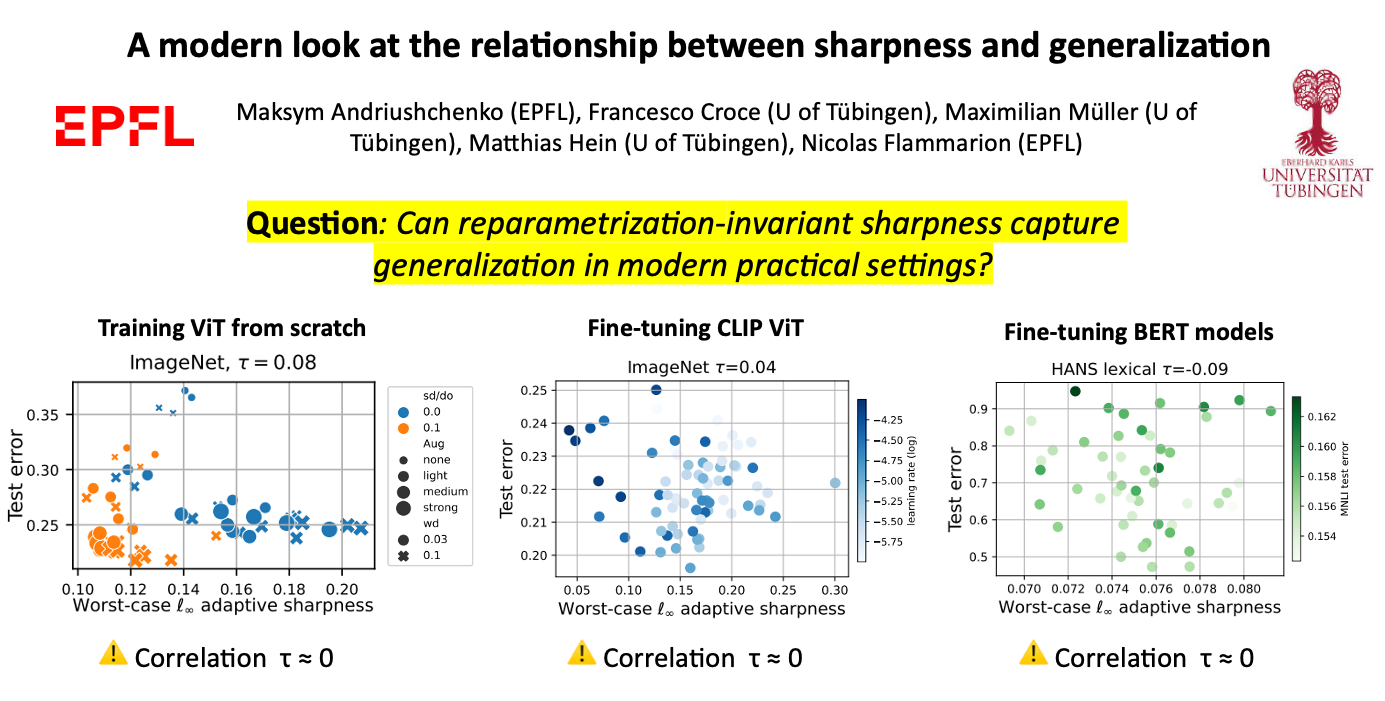Maksym Andriushchenko (EPFL), Francesco Croce (University of Tübingen), Maximilian Müller (University of Tübingen), Matthias Hein (University of Tübingen), Nicolas Flammarion (EPFL)
ICML 2023
Paper: https://arxiv.org/abs/2302.07011
The main script to evaluate sharpness is eval_sharpness.py for which you first need to install packages from requirements.txt. The command line parameters for eval_sharpness.py should be quite straightforward and their brief description is available in help=... of parser.add_argument(...). For example, this script evaluates adaptive Linf worst-case sharpness (with logit normalization) and exports evaluation results in a json file:
python eval_sharpness.py --dataset=cifar10 --model=vit_exp --model_width=512 --n_eval_sharpness=1024 --bs_sharpness=128 --rho=0.001 --adaptive --normalize_logits --n_iters=20 --algorithm=m_apgd_linf --log_folder=logs_final_vit_max_linf --model_path="${model_path}"All CIFAR-10 evaluations can be reproduced by running sh/eval_sharpness_final.sh. The evaluations on ImageNet and BERT models can be run similarly but first one has to download the data and models (see below for the models).
- The models trained from scratch and fine-tuned on ImageNet from ImageNet-21k can be found here https://github.com/google-research/vision_transformer#fine-tuning-a-model.
- The fine-tuned CLIP models can be found here https://github.com/mlfoundations/model-soups/#step-1-downloading-the-models.
- The fine-tuned BERT models can be found here https://github.com/tommccoy1/hans.
- The CIFAR-10 Models that we trained can be found here https://drive.google.com/drive/folders/1LmthJCb3RXBFWjeTOC4UOOl7Ppgg2h7n?usp=sharing.
notebooks/sharpness_deep_nets.ipynb: plot various trends based on the results parsed fromeval_sharpness.py.notebooks/sharpness_linear_model.ipynb: a quick plot for logistic regression showing the scale invariance issue (even for adaptive sharpness).
